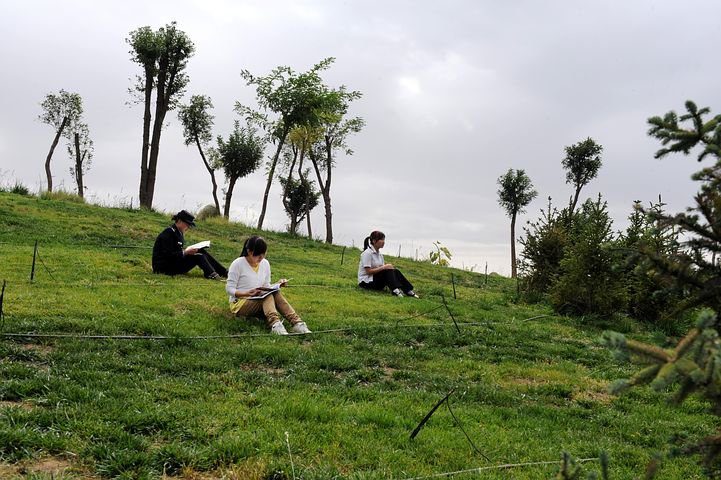The road to college
While the pandemic isn’t in the rearview mirror just yet – with news of the Omicron subvariant BA.2 cases spreading fast in L.A. – the overall feeling is that we might soon see the end of it. Most public schools districts in Southern California have lifted masking mandates; several independent and private schools have followed suit, exception for a few circumstances that they are posting on their websites or electronic newsletters.
And now we’re two weeks into spring! That means most students are looking forward to Easter/spring break and getting some much needed rest from the rigors of high school work. It’s a great opportunity to take a short out-of-town trip, especially if you’ve been putting off traveling because of safety concerns. Getting away from our regular daily routine helps us recalibrate and rejuvenate. But if traveling isn’t an option, be sure to enjoy the mild spring weather. Happy spring!
FRESHMAN
The school year is winding down. Your ninth graders should be on track on all their academic grades and putting extra effort into getting the best grades they could muster. They should also line up summer activities – enrichment programs, summer camps, volunteer work, or part-time jobs.
All these – grades, arts, athletics, community work, employment – from 9th through 12th grade, will be recorded on the transcript that your children’s high schools will send to the colleges to which they apply.
SOPHOMORE
Not all universities have dropped standardized tests as a requirement for college application. Make sure your children have registered for all the tests they have to take in May or June (possible AP tests for 10th graders are math, chemistry, history and foreign language; deadlines are April and May for tests in May and June).
They need to plan their summer activities. If they are taking an art elective, or are interested in a particular art field, they should consider a summer program in that course to put on their resumé.
JUNIOR
This is the last complete academic year admissions officers will see when your children apply to colleges. They want to see grades that are improving from year to year, so the 11th grade final marks should be the highest on the report cards. If your children have gone on virtual college campus tours they should also know the academic requirements of the colleges to which they are thinking of applying. They need to look at where they are grades-wise to figure out if the school on their list is a realistic goal. The spring break is also an opportune time to go on campus visits (see March College Search Guide for tips on making the most of them). Admissions officers are on hand to do interviews and students are on campus so you can talk with them.
Make sure your children have registered for the SAT, ACT (www.act.org), SAT Subject Tests, AP especially if they are thinking of applying through early action or early decision.
They should have all their summer activities lined up – enrichment programs, summer camps, volunteer work or part-time jobs. Remind your children to continue the pursuits they started in freshman year as admissions officers look for sustained interest, which is a reflection of what they are truly passionate about.

SENIOR
Some universities have sent out their decision letters in mid- or late-March, or mid-April if they applied to the Ivies. If your children are lucky enough to be accepted to all the schools to which they applied, they deserve a big congratulations! You can all exhale now!
This is the part where your children get to choose the school they really want to attend. During the application process, your children were hoping the colleges to which they applied accept them. Now the colleges that accepted your children would like your kids to choose them! In this rank-obsessed world of American universities, the schools encourage all students to apply to them (they actively recruit students they would never even admit because the more applications they receive and the more rejections they send out, the higher they’re ranked. Additionally, it’s a huge financial boost; the most sought-after colleges and universities get several thousand applications which earn them millions of dollars.). The tables are turned because once your children get the schools’ acceptance letter, these schools would like to ensure your kids actually attend their college. This is the yield: the higher their yield, the higher their ranking.
If your children are applying for financial aid or scholarships, now is the time to compare schools’ financial aid or scholarship offers. If a particular school really wants your children, you might have the opportunity to ask for a better package than what it originally extended.
If your children have been waitlisted to a school they are determined to get into, they need to respond quickly to let the admissions officers know that they are very interested. Your children should send a follow-up letter to express that the school is their top choice and that they will definitely enroll if accepted.
Demonstrated interest is all the more critical at this juncture as your children want to ascertain the admissions officers keep them in mind. Encourage your children to work with their high school’s counselor to make sure they send the transcript for the first semester, and any updates on awards and honors received after they sent their application. Your children need to keep in constant touch with the admissions officers.
The admissions office requires a decision from accepted students on May 1. Make sure your children accept the offer of their second choice school where they have been admitted, and pay the required deposit. If your children are later accepted to the school to which they were waitlisted and accept that offer, they will lose the deposit on the other school. But it’s their guarantee that they will be attending a college in the fall.







